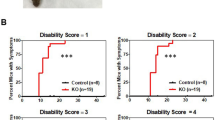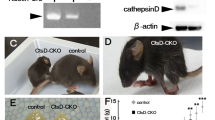Abstract
To investigate the expression of CP in Down syndrome (DS) mouse model, we especially observed the changes in neuronal CP. We systematically analyzed the level of CP in Ts65Dn mouse, including serum CP concentration and enzymatic activity, CP mRNA in brain, the expression of CP protein in brain. The applied technologies were ELISA, chemical colorimetry, RT-PCR, immunohistochemistry. Compared with the control group, there were no differences of significance in the concentration, enzymatic activity and unit activity of serum ceruloplasmin. By RT-PCR, we also found there were no significant differences in the level of CP mRNA. The expression of CP was positive in the endochylema of neuronal cells of both the groups, and there were no significant difference between the two groups. Meanwhile, there were no differences in four regions of the brain (cerebral cortex, hippocampus, thalamus and cerebella). Although the neurotoxic effects of CP related to some neurodegenerative diseases, but whether it does so in DS remains to be determined.

Similar content being viewed by others
References
Roizen NJ, Patterson D (2003) Down’s syndrome. Lancet 361:1281–1289
Visser FE, Aldenkamp AP, Van Huffelen AC, Kuilman M, Overweg J, Van Wijk J (1997) Prospective study of the prevalence of Alzheimer-type dementia in institutionalized individuals with Down syndrome. Am J Ment Retard 101:400–412
Coppus A, Evenhuis H, Verberne GJ et al (2006) Dementia and mortality in persons with Down’s syndrome. J Intellect Disabil Res 50:768–777
Rihtman T, Tekuzener E, Parush S, Tenenbaum A, Bachrach SJ, Ornoy A (2010) Are the cognitive functions of children with Down syndrome related to their participation? Dev Med Child Neurol 52:72–78
Couzens D, Cuskelly M, Haynes M (2011) Cognitive development and Down syndrome: age-related change on the Stanford-Binet test (fourth edition). Am J Intellect Dev Disabil 116:181–204
Contestabile A, Benfenati F, Gasparini L (2010) Communication breaks-Down: from neurodevelopment defects to cognitive disabilities in Down syndrome. Prog Neurobiol 91:1–22
Lubec G, Engidawork E (2002) The brain in Down syndrome (trisomy 21). J Neurol 249:1347–1356
Yi-Jing D, Xiao-Tian L (2009) Molecular and cellular mechanisms of mental retardation in Down syndrome. J Int Obstet Gynecol 36:178–180
Vassiliev V, Harris ZL, Zatta P (2005) Ceruloplasmin in neurodegenerative diseases. Brain Res Brain Res Rev 49:633–640
Connor JR, Tucker P, Johnson M, Snyder B (1993) Ceruloplasmin levels in the human superior temporal gyrus in aging and Alzheimer’s disease. Neurosci Lett 159:88–90
Bt Hyman (1992) Down syndrome and Alzheimer disease. Prog Clin Biol Res 379:123–142
Tórsdóttir G, Kristinsson J, Hreidarsson S (2001) Copper, ceruloplasmin and superoxide dismutase (SOD1) in patients with Down’s syndrome. Pharmacol Toxicol 89:320–325
Faizi M, Bader PL, Tun C et al (2011) Comprehensive behavioral phenotyping of Ts65Dn mouse model of Down syndrome: activation of β(1)-adrenergic receptor by xamoterol as a potential cognitive enhancer. Neurobiol Dis 43:397–413
Chakrabarti L, Best TK, Cramer NP et al (2010) Olig1 and Olig2 triplication causes developmental brain defects in Down syndrome. Nat Neurosci 13:927–934
Liao Q, Zhao L, Chen X, Deng Y, Ding Y (2008) Serum proteome analysis for profiling protein markers associated with carcinogenesis and lymph node metastasis in nasopharyngeal carcinoma. Clin Exp Metastasis 25:465–476
Brewer GJ, Kanzer SH, Zimmerman EA, Celmins DF, Heckman SM, Dick R (2010) Copper and ceruloplasmin abnormalities in Alzheimer’s disease. Am J Alzheimers Dis Other Demen 25:490–497
Olivieri S, Conti A, Iannaccone S et al (2011) Ceruloplasmin oxidation, a feature of Parkinson’s disease CSF, inhibits ferroxidase activity and promotes cellular iron retention. J Neurosci 31:18568–18577
Acknowledgments
We thank all the project participants for their contributions. This study was supported by grants from Changzhou Research Program of Applied Basic (CJ20122022) and Major projects of Jiangsu Maternal and child health (F201217).
Author information
Authors and Affiliations
Corresponding author
Rights and permissions
About this article
Cite this article
Yu, B., Kong, J., Xing, B. et al. Does ceruloplasmin differential express in the brain of Ts65Dn: a mouse mode of Down syndrome?. Neurol Sci 35, 589–593 (2014). https://doi.org/10.1007/s10072-013-1570-y
Received:
Accepted:
Published:
Issue Date:
DOI: https://doi.org/10.1007/s10072-013-1570-y




